SOUNd REiNfoRCEMENT HANdbook
SOUNd REiNfoRCEMENT HANdbook
SOUNd REiNfoRCEMENT HANdbook
You also want an ePaper? Increase the reach of your titles
YUMPU automatically turns print PDFs into web optimized ePapers that Google loves.
Page TC-2<strong>SOUNd</strong> <strong>REiNfoRCEMENT</strong> <strong>HANdbook</strong>© 1987, 1989PageSection/Subsection & TitlePageSection/Subsection &Title9595959696 8.897979799 8.9100 8.10101103103 8.111051051061071071091101111121131131131141141151161161161171171181181191191201201211211211211231231241251251261261271271291291291301301311311321321321331331351361361371389.19.29.39.48.7.3.3 How the load affects outputvoltage8.7.4 What happens when hi-fi and proequipment mix8.7.4.1 Hi-fi output to pro equipmentinput8.7.4.2 Pro equipment output to hi-fiinputCrosstalk8.8.1 What causes crosstalk?8.8.2 Crosstalk in cables8.8.3 Specification of crosstalk .Filter slope rates and turnover frequenciesSquare wave tests8.10.1 Oscilloscopes8.10.2 What not to expect with square wavesMiscellanySection 9. Why Ears Don't AlwaysCorrelate With SpecsDifferent points of view9.1.1 Calibrated mics vs ears9.1.2 Average ears vs "golden ears"Test equipment measurements vs listening tests9.2.1 Test signals versus program material9.2.2 Location and number of test microphones9.2.3 Dynamic rangeStatic vs dynamic testsMasking effects and equipment interactionSection 10. Microphones10.1 Methods of transduction10.1.1 Dynamic10.1.2 Condenser10.1.3 Electret condenser10.1.4 Ribbon10.1.5 Carbon10.1.6 Piezoelectric10.2 Functional design10.2.1 Hand-held10.2.2 Stand-mounting10.2.3 Lavalier10.2.410.2.5Contact pickupPressure response10.2.6 Shotgun10.2.7 Parabolic10.2.8 Multi-element arrays10.2.9 Noise cancelling microphones10.3 Acoustical and electrical characteristics10.3.1 Pickup patterns10.3.1.1 Omnidirectional10.3.1.2 Cardioid10.3.1.3 Bidirectional or figure-810.3.1.4 Supercardioid10.3.210.3.3Frequency responseProximity effect10.3.4 Transient response10.3.5 Output level or sensitivity10.3.6 Overload10.3.710.3.8ImpedanceBalanced and unbalanced connections10.4 Application information10.4.1 Windscreens and pop filters10.4.210.4.3Shock mountsPhantom power10.4.4 Effect of the number of openmicrophones10.4.5 Gain and microphone placement10.4.6 Stereo recording10.5 Wireless intercom systems10.5.1 What is a wireless intercom?10.5.2 Who uses wireless intercoms?10.5.3 What is the background of wirelessintercoms?10.5.4 Types of wireless intercoms10.5.510.5.6Frequencies usedImproved range and noise reduction10.5.7 Evaluating and selecting a system10.5.8 Conclusions10.5.9 Glossary of wireless intercom terms139139139139140141142145146146147148149152152153153154155155155157162162162164165166167168168169170170172 11.7172173173174174174175 11.8178 11.917817817918018018118218218318418518618618618718918918919010.6 Wireless microphone systems10.6.1 What is a wireless mic?10.6.2 Who uses wireless mics?10.6.3 What is the background of wirelessmics?10.6.4 Radio frequencies used10.6.5 Technical problems10.6.6 Solutions10.6.8 Compatibility of wireless mic systems10.6.9 Antenna cables10.6.10 Evaluating wireless microphone systems10.6.11 Conclusions10.6.12 Glossary of wireless microphone termsSection 11. Preamplifiers, Small Mixers,& Mixing Consoles11.1 General discussion11.2 Preamplifiers11.2.1 What are they, and what do they do?11.2.2 Impedance converters11.2.3 Phono preamps11.3 Mixers11.4 Consoles11.4.1 What is a console?11.4.2 How mixes differ: pre & post faderconsiderations11.4.3 Panning, summing and master faders11.5 Understanding console specifications11.5.1 How many inputs, mixes and outputs?11.5.2 Signal-to-noise ratio11.5.3 Maximum voltage gain11.5.4 Headroom11.5.5 Indicators11.6 Transformer isolated versus electronically balancedinputs & outputs .,116.1 Transformers versus differential amps:price concerns11.6.2 Discrete versus IC differential amps11.6.3 The case for the transformer11.6.4 Transformers and AC safety11.1011.1111.1211.6.5 More on transformersGain staging and gain structure11.7.1 Why does gain have to be manipulated?a review of sound levels fed to the console11.7.2 Gain control at the microphone input11.7.3 Input attenuation or padding11.7.4 Eliminating other causes of signal-level(& gain) related distortion11.7.4.1 Summing amp overdrive11. 7.4.2 Power amp overdriveInterface with sub-mixersStage monitor mixing consoles11.9.1 What is a stage monitor system?11.9.3 Why a monitor console is preferable to amix from the main house console11.9.4 The importance of a high qualitymonitor mix11.9.5 Other benefits of a separate monitorconsole11.9.6 Polarity (phase) reversal as a tool tofight feedback11.9.7 Eliminating SCR dimmer noiseMicrophone splitting11.10.1 The splitter transformer . .11.10.2 Additional isolation for high-noiseenvironments11.10.3 Splitting a mic without a transformerReducing feedback in the stage monitor system11.11.1 Directional microphones11.11.2 Polarity reversal (or "phase" reversal)11.11.3 Ringing out a monitor system11.11.4 Aiming monitor loudspeakersEquipment placement11.12.1 Additional monitor console placementfactors11.12.2 Main house mixing console placement






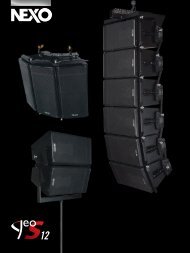
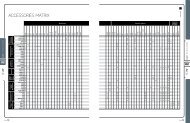

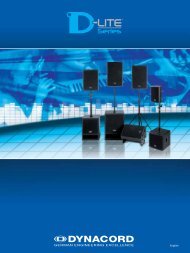

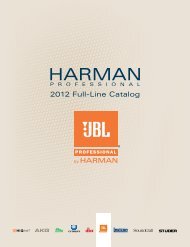



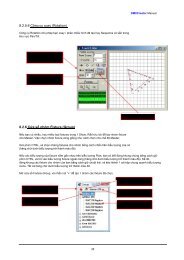
![IWIXERS lllll] llllllll] Pll|]lIESSllllS](https://img.yumpu.com/6710947/1/147x260/iwixers-lllll-llllllll-pll-liesslllls.jpg?quality=85)